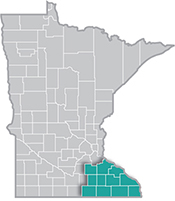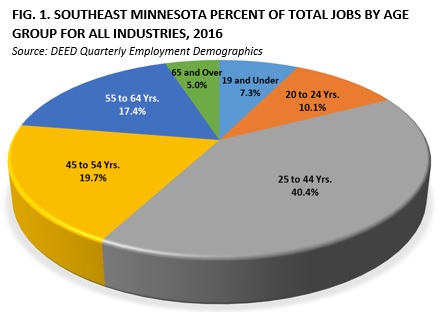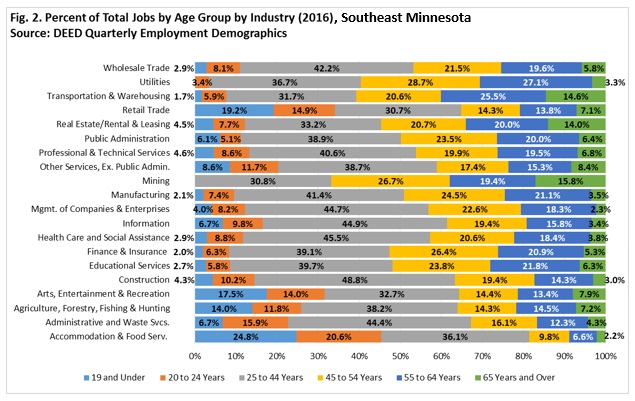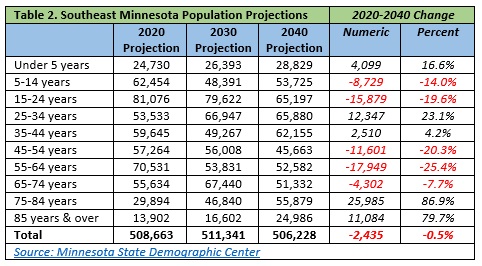 Southeast Minnesota is a health care and agricultural powerhouse. The region is home to the renowned Mayo Clinic and some of the world's most recognized food companies and brands.
Southeast Minnesota is a health care and agricultural powerhouse. The region is home to the renowned Mayo Clinic and some of the world's most recognized food companies and brands.
Advanced manufacturing is especially strong here, with machinery, chemicals, and electronics among the top products.
Want the freshest data delivered by email? Subscribe to our regional newsletters.
11/28/2017 9:47:04 AM
Many jobs are available in Southeast Minnesota for people of all age groups. Whether you’re looking for a part-time job to help pay school loans or buy gifts for the holidays, your first job to start your career after college, a step up in your current career pathway, or something to earn extra income after retirement, age appears to be nothing but a number in the current employment landscape of the region.
As seen in Figure 1, the largest portion of the jobs in the region are filled by those ages 25 to 44, part of the ‘prime working years.’ Significant portions of jobs are occupied by other age groups, including 19.7 percent for 45 to 54 years and 17.4 percent for 55 to 64 years. Understandably, far fewer individuals aged 65 years and over occupy jobs in the region as many residents may be retired. Only 7.3 percent of those ages 19 and under hold jobs; they may be enrolled in school full-time and not working or have yet to find the need to work for other reasons.

The type of industry definitely has an impact on the number of people within certain age groups who are employed in them. For example, the most significant portion of teenaged workers are employed in accommodation and food services (24.8 percent). This comes as no big surprise given that many of these jobs are characterized by lower skill requirements and part-time hours, which typically is more convenient and flexible for those attending school. In fact, according to DEED’s Job Vacancy Survey, almost three-quarters (73 percent) of the current openings in food preparation and serving occupations are part-time.
The accommodation and food service industry also employs the highest percentage of workers aged 20 to 24 years. The retail trade and arts, entertainment, and recreation industries also employ larger percentages of young workers. In contrast, these two age brackets are least likely to be represented in the mining industry, which has the highest percentage of workers aged 65 years and over (15.8 percent).

As shown in Table 1, only four industry sectors claim the highest percentages of workers based on age – accommodation and food services, construction, utilities, and mining. This is not the largest amount, just the highest percentage of each age group by industry.

Perhaps there is room to improve on this. It may be possible to introduce younger generations to industries that have low concentrations of younger workers, such as transportation and warehousing (1.7 percent) and manufacturing (2.1 percent). While certain jobs within these industries may be unavailable for individuals under the age of 18 for reasons such as safety, it may be possible for younger workers to at least be exposed to certain jobs in a stock room or on a production floor.
Additionally, there may be ways to increase the percentage of workers in older age groups in certain industries. Population projections from the Minnesota State Demographic Center show that the region is anticipated to see further dynamic changes based on age, which could throw a proverbial wrench in the gears of the Southeast Minnesota job landscape. As seen in Table 2, there is projected to be some rather substantial gains and losses in the population which will affect not only the population as a whole in the region (which is expected to decline by almost 2,500 residents from 2020 to 2040), but also specific age groups.
For example, there is projected to be a loss of almost 16,000 people ages 15 to 24 as well as other large numerical losses among those 45 to 54 and 55 to 64 years of age. The region is also expected to see a dramatic increase in those aged 75 and over, which would likely leave many vacancies and the subsequent need for replacement hires as more and more baby boomers retire. For those industries with large numbers of older workers, such as mining, transportation and warehousing, and real estate, rental and leasing, this could leave several voids that could be hard to fill.

This will become a much bigger deal in the future. According to DEED’s Employment Outlook tool, the region is projected to have 1,330 total openings for laborers and freight, stock and material movers (warehousing) and another 970 for heavy and tractor-trailer truck drivers from 2014 to 2024. Of these, 1,010 laborer and freight, stock and material mover and 740 truck driver openings are due to replacement needs.
DEED has created several tools to explore workforce demographics, including the Quarterly Employment Demographics (QED) tool and an interactive set of workforce demographic visualizations.
Contact Mark Schultz.